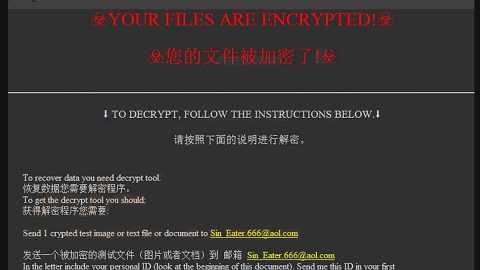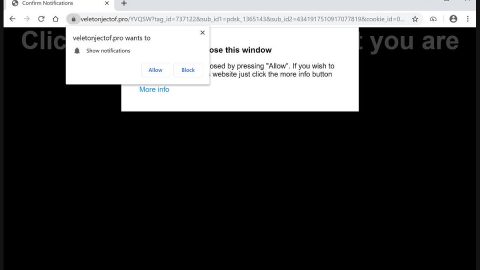Nowadays, the spreading of different fake error messages have been rampant for the sole purpose of tricking computer users in order to gain money. One of these fake error messages scam is the “COMPUTER BLOCKED” scam. This fake error is displayed by a suspicious website which users often visit unintentionally, after clicking a corrupted link or through several potentially unwanted programs (PUPs). PUPs infect the system without any consent or without the knowledge of the computer user through software bundles or intrusive online ads while continuing to monitor and record a lot of system information.
The “COMPUTER BLOCKED” scam displays the following message:
“Windows Firewall has detected some suspicious activity from your IP address and network connection has been blocked temporarily.
To get it unblocked you need to call on Microsoft Technical Support Desk.
Microsoft Safety & Security Center: +1-844-392-7021
Ring now to get it fixed toll free: +1-844-392-7021
Do not restart the device, this may cause serious damage to the system and network address. Don’t worry, Microsoft brings this free
for you. Please do not shutdown or restart your computer, doing that ay lead to data loss and failure of operating system, hence
non bootable situation resulting complete data loss. Contact administrator department to resolve this issue on toll free
+1-844-392-7021 Official US Local Microsoft Support”
Based on the fake error message, the computer’s Windows firewall has detected some suspicious activity in the computer that resulted to the internet connection blocked. Victims are then demanded to contact the “Microsoft Technical Support” using telephone number (+1-844-392-7021) to fix the problem and to go over the supposed recovery procedure.
According to our researchers, the “COMPUTER BLOCKED” is virtually similar to the following infections: Suspicious Ransomware Activity, Error Virus – Trojan Backdoor Hijack, Unknown Security Breach and other fake error scams. All of these fake error scams claims that the computer is damaged in some way when the truth is their goal is to generate revenue by tricking the victims to call the fake tech support.
Always take note: never ever tried contacting the number they provided since it will put your security at risk even more than you already are. If you called the so called “Microsoft Technical Support”, you’ll be tricked into paying for useless services not to mention that you might even give them remote access to your computer to bring even more infection like ransomware and other threats. You might also be demanded to give in certain private information such as your credit card details. Needless to say, calling these criminals won’t do you any good and can cause even more trouble. You can remove the fake error by simply closing the malicious website or the browser. But it does not mean that closing the browser can remove the malicious or potentially unwanted program in your computer that is behind this fake error scam.
The fake error scams like “COMPUTER BLOCKED” scam as mentioned earlier, is distributed through bundles of software which is a way for most cyber criminals to stealthily install third party software that are often infected to infiltrate the computer. Suspicious programs are often hidden within the Custom/Advanced step. So it is recommended to pay attention in the installation process and to never skip the steps without fully comprehending it in order to prevent being infected by malware.
Follow the steps below to remove the “COMPUTER BLOCKED” scam as well as the malware behind it.
Step 1: Remove the threat from your browsers:
Google Chrome
- Open Chrome and press Alt + F keys.
- Go to More tools and click Extensions to look for Search.superspeedtester.com
- Click the Recycle bin and select Remove.
- Restart Chrome and press Alt + F keys again.
- Proceed to On Startup and mark Open a specific page or set of pages.
- To check if the browser hijacker is still active, click Ste pages, if it is active, overwrite the URL.
Mozilla Firefox
- Open Mozilla Firefox and press Ctrl + Shift + A.
- Go to Extensions and remove Search.superspeedtester.com.
- Restart Mozilla Firefox.
- Press Alt + T and select Options.
- If the browser hijacker is still there, go to the General menu and overwrite the unwanted URL.
Internet Explorer
- Open Internet Explorer and press Alt + T keys.
- Choose Internet Options and click the General tab.
- If your home page is still Search.superspeedtester.com, overwrite the URL and click OK.
- Restart Internet Explorer.
Step 2: Reboot your computer into Safe Mode by pressing F8 repeatedly until the BIOS screen shows up.

Step 3: Go to the Windows Task Manager by pressing Ctrl + Shift + Esc at the same time. Proceed to the Processes tab and look for the any suspicious processes.

Right-click on the processes, then click Open File Location and scan them using a powerful and trusted antivirus like SpyRemover Pro. After opening their folders, end their processes and delete their folders. If the virus scanner fails to detect something that you know is suspicious, don’t hesitate to delete it.
Step 4: Uninstall any malicious programs in the Control Panel.
Open Control Panel by pressing Start key + R to launch Run and type appwiz.cpl in the search box and click OK.

After opening Control Panel, look for any suspicious program and then Uninstall it.

Step 5: Go to System Configuration.
Click the Windows button and type msconfig in the search box and hit Enter to Open System Configuration. Go to Startup and unmark items with unknown manufacturer.

Step 6: Delete everything under these directories:
- %USERPROFILE%\Downloads
- %USERPROFILE%\Desktop
- %TEMP%
Step 7: Open you File Explorer by pressing Win + E.
Step 8: Look for any malicious executable files you have saved or downloaded and ran prior to the display of the fake error scam and delete them.
Step 9: Go to your Recycle Bin and erase everything.
Step 10: Scan your computer.
Perform a full system scan using an excellent antivirus and anti malware program like SpyRemover Pro. This will help you get rid of any malware and viruses as well as prevent infections like that from infecting the computer again in the future.











